If the Olympics inspired you to take another look at your neighbourhood pool, probably the biggest thing holding you back is the question: What do I actually do when I’m in there? Here’s how to turn a day at the pool into a satisfying workout.
Illustration by Sam Woolley. Additional photos by EvelynGiggles, Hy Crutchett, Miss Messie and Buffalo Triathalon Club.
This guide is for people who already know how to swim, whether or not you think you’re good at it. If you need more of an on-ramp than what we have here, check your local pool for adult beginner classes. You can also look up your local masters team, which may sound intimidating but it’s actually just a swim club for adults of all skill levels.
Prepare Before You Go
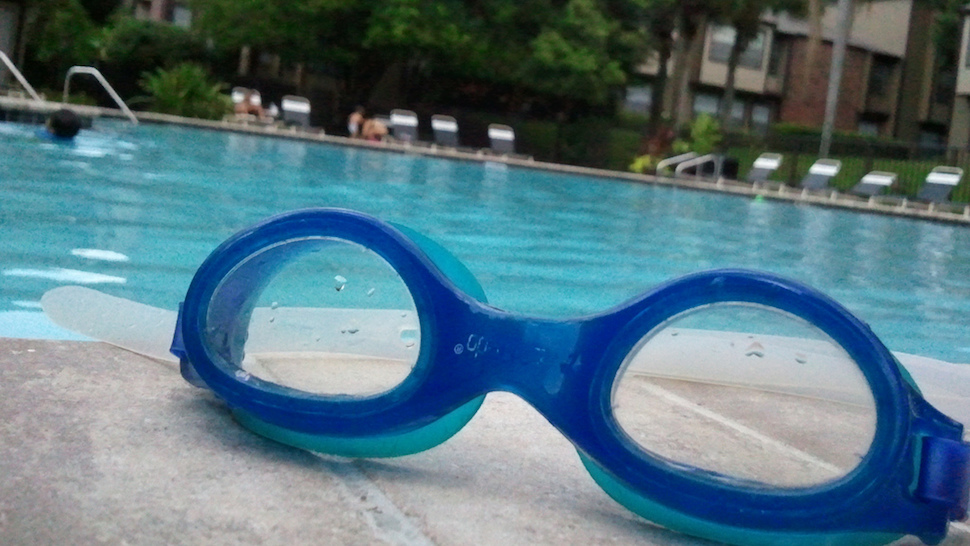
First, find a pool and gather up your gear. Most large public pools will have at least a few lanes available for lap swimming, and you’re a lot more likely to have the place to yourself if you go at a slow time during the school semester. Make sure to check the pool’s schedule in case you have to plan around kiddie sessions or water aerobics classes.
You can swim in any suit, but you’ll be most comfortable in something that doesn’t drag in the water and isn’t likely to slip around when you move. That’s why men on swim teams wear snug fitting trunks rather than board shorts, and women tend to prefer one-piece racerback suits.
You’ll also probably want a pair of goggles. They should fit snugly around your eyes, and you can test this in the store by smooshing them onto your dry face. If they fit, you’ll be able to create enough suction that they stay momentarily stuck to your face. You can swim without goggles, but you’re more likely to bump into the side of the lane since you can’t always see where you’re going.
A swim cap isn’t a must, but it’s a good idea if you want to keep long hair out of your face, or if you want to protect your hair from that greenish tint it can acquire after many dips in the pool.
Don’t forget a lock to secure your belongings in the locker room, and bring a healthy snack for when you dry off and discover you’re starving. It’s also nice to have a bottle of water at the end of your lane, because you’ll get thirsty just like you do in other types of exercise.
Understand How Swimmers Work Out
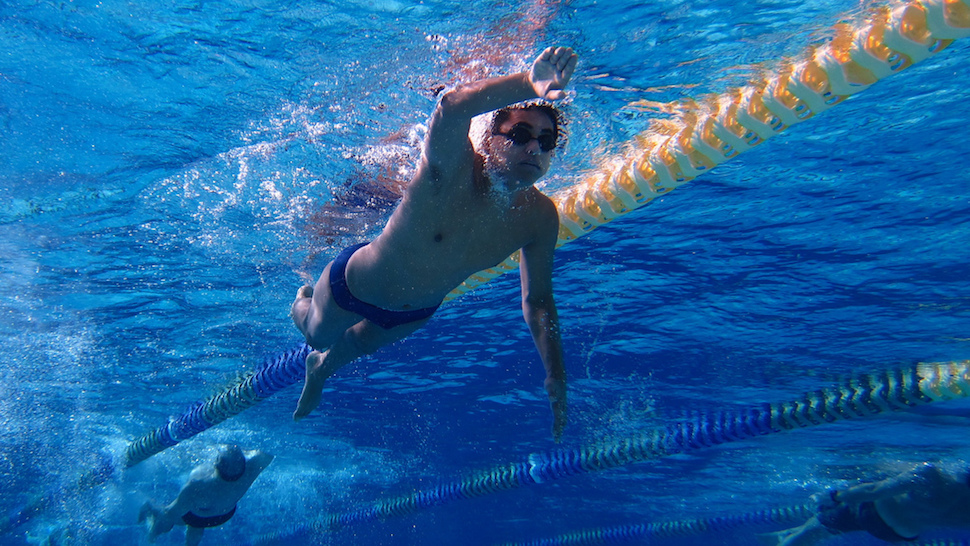
Look up and down the lanes of your local pool, and you’ll mostly see people swimming freestyle. Also known as the front crawl, freestyle is popular because it’s the fastest, most efficient stroke we have. It became known as freestyle because it’s the obvious choice for swimming events that are designated as “freestyle” events — where you are allowed to swim any stroke you like.
A few people in the pool may swim a slow steady pace for their whole workout, but most serious swimmers structure their workouts as interval training, meaning they work hard for a few minutes and then take a break before doing it all again. Intervals work well because pools are short (compared to the kilometres of road that a runner or cyclist would travel) and because intervals just happen to be great for improving your fitness. They also bring more variety to what could otherwise be a boring workout.
To find out what goes into a good swimming workout, we asked Cokie Lepinski, head coach of recreational swim team Swymnut Masters. “Great question! It isn’t easy building a workout from scratch,” she said. When she designs a workout for her group, it includes four components:
- The warmup takes up the first 10 minutes or so. During this time, you’re reminding your body what it’s like to swim. You’ll find your rhythm in breathing, and ease yourself into the workout. “Be sure and exhale anytime your face is in the water and don’t hold your breath. Start nice and easy with your arms and legs and gently build your speed as you work through your warm up,” she says.
- The pre-set allows you to practise the skills you’ll do in the rest of the workout. Some workouts merge this with either the warmup or the following set. The pre-set might include drills where you concentrate on moving your arms in a certain way, or doing entire laps of just kicking. This is the best time to work on learning a new skill, or fixing a flaw in your technique, because you’re warmed up enough to work hard, but you’re not tired yet.
- The main set is just what it sounds like. It’s the longest part of the workout, and it’s where you’ll work the hardest. If you practised a skill in the pre-set, you’ll have plenty of chances to put it to the test in the main set.
- The cooldown is the final segment, usually five to 10 minutes of easy swimming.
A workout can be as long or as short as you like. Take it easy your first time out, and just try to have fun while you remind your body how swimming works.
Learn the Lingo and Swim Your First Workout
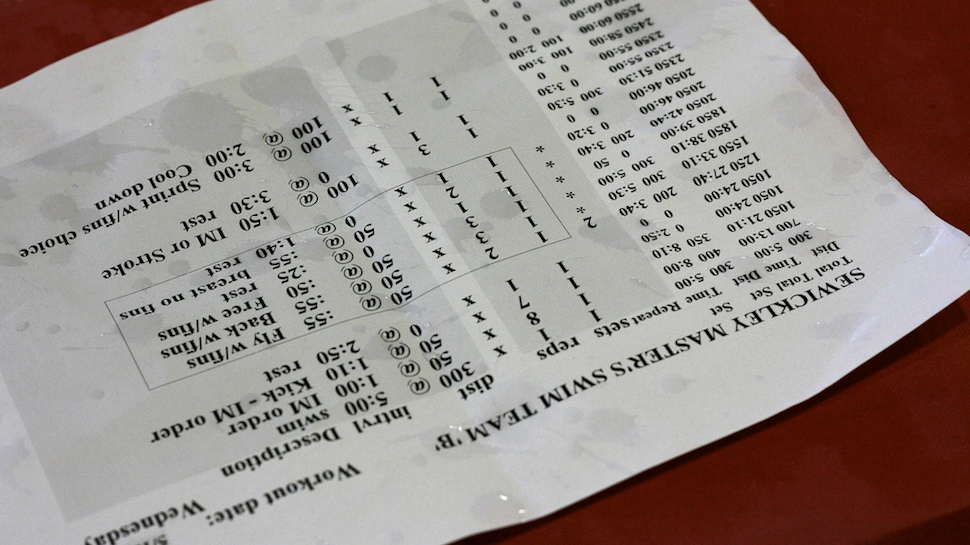
If you don’t have a coach to put a workout together for you, a ton of swimming web sites list workouts you can do. Some of my favourites are workouts for triathletes, since many triathletes started as cyclists or runners and are relative beginners at swimming. Their workouts, like the ones in this plan from Active.com, tend to be simple but effective.
For more traditional swimming workouts, masters clubs tend to share daily or weekly workouts with their members. If you don’t have access to a club, Sara McLarty, a masters coach from Florida, has posted a treasure trove of free workouts on her blog. Each one has options for three different levels: If you’re a super swimmer, you’ll do the level “A” workouts, and if you’re not quite at that level, you’ll do “B”. Newer swimmers should start with the “C” level options. Here’s an example of a “C” level workout:
400 warm up
3×150 w/:30 seconds rest (50 free/50 non-free/50 free)
3×150 swim w/:20 seconds rest (descend 1-3)
50 easy
3×150 pull w/:20 rest (descend 1-3)
50 easy
3×150 w/:30 rest (fins optional) (50 kick/100 swim)
100 cool down
*2400 Total*
With the help of a swimming terms glossary, we can decode what this means:
- The warmup is 400m, which means you’ll either cover eight lengths of a 50m pool, or 16 lengths of a 25m pool. Most swimmers will do freestyle if the workout doesn’t specify a stroke.
- Next, you do three intervals where you swim 150m and then rest for 30 seconds. The first 50m are freestyle, the next 50 are any non-freestyle stroke you like and then the last 50 are freestyle again.
- After that, you do another three intervals, this time on just 20 seconds of rest. The note about descending means that you do each interval in less time than the one before it: Fast, faster, fastest.
- “50 easy” means 50m of easy swimming.
- The next segment is another descending set of intervals, but this time we “pull” instead of “swim”. That means you’ll do this set only using your arms. You can put a foam pull buoy between your legs so your legs will float without you having to kick.
- In the next set of intervals, some of them are labelled “kick”. That’s the opposite of pull: You’ll do your laps just by kicking your legs, without moving your arms. While it’s traditional to use a kickboard for kicking drills, Lepinski recommends doing without, since a kickboard puts your back into an unnatural position. Instead, just put your face in the water and your arms at your sides. A snorkel can help you concentrate on kicking without having to turn your head to breathe.
- The cooldown is 100m, which again you can swim any way you like.
In some workouts, your rest between intervals is handled a bit differently. Instead of asking you to do a certain distance followed by a certain amount of rest, your coach may tell you to compete the interval AND the rest within a certain number of minutes. For example, another of McLarty’s workouts includes a line that says “5×100 @ 3:00”. That means you start a new 100m interval every three minutes. The faster you swim, the more rest you get.
But the strategy here isn’t to just swim super fast, since that will also make you more out of breath. Instead, you’re aiming to go as fast as you can while staying relaxed enough that you can still breathe. This is tricky to get right, and as a beginner it’s totally fine if you’d rather choose workouts where you can rest as much as you feel is appropriate. These types of intervals are common in swim workouts, though, so it’s good to know how to read them.
Get Better
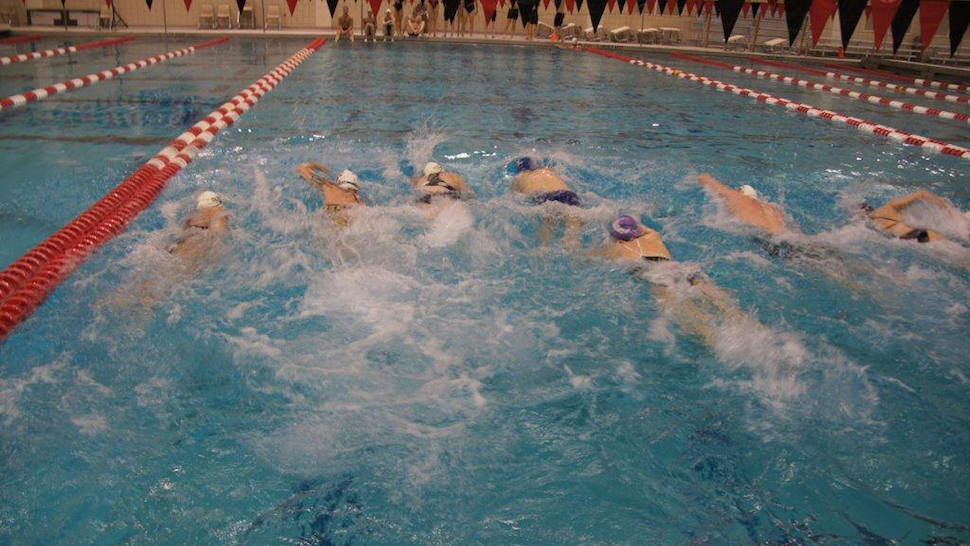
Once you’ve started swimming workouts, you’ll probably start noticing that you have room for improvement. If you get tired easily, the problem isn’t necessarily your endurance. In swimming, good technique is important so you’re not fighting against the water any more than you have to.
The swimming lessons and clubs we mentioned earlier are great ways to work on your freestyle or other strokes. They’re also a good place to start to learn competition-oriented skills like how to dive in at the start of a race, and how to do those somersault-looking flip turns to save time when you need to turn around.
If you’re interested in competition, masters teams organise swim meets, and you don’t have to be an expert swimmer to participate and have fun. Or for a different kind of goal, you can look towards triathlon training or swimming-only endurance events, where swimmers do their thing in open water such as at the beach. (Even so, they usually do most of their training in a pool.)
As with any type of exercise, you can choose swimming goals that you like, develop a plan to train toward those goals and improve the skills and fitness you need to keep working toward your goal and having fun. But first, you begin by jumping into the pool.
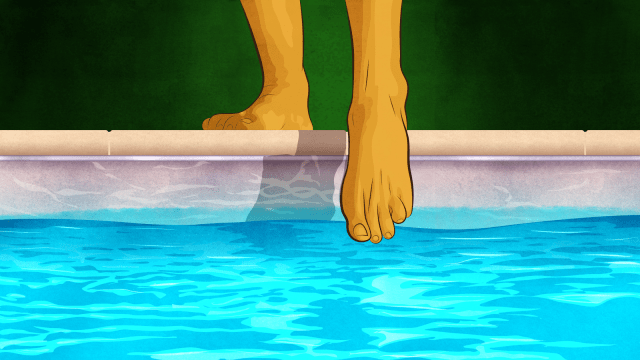
Comments